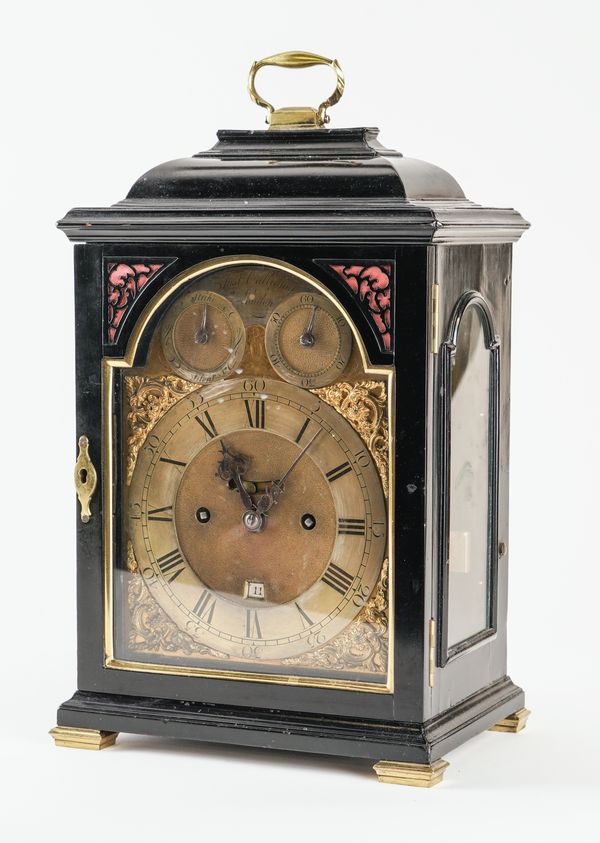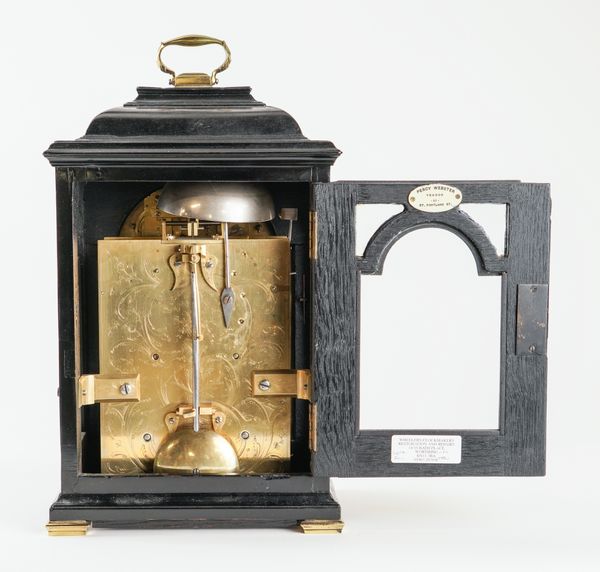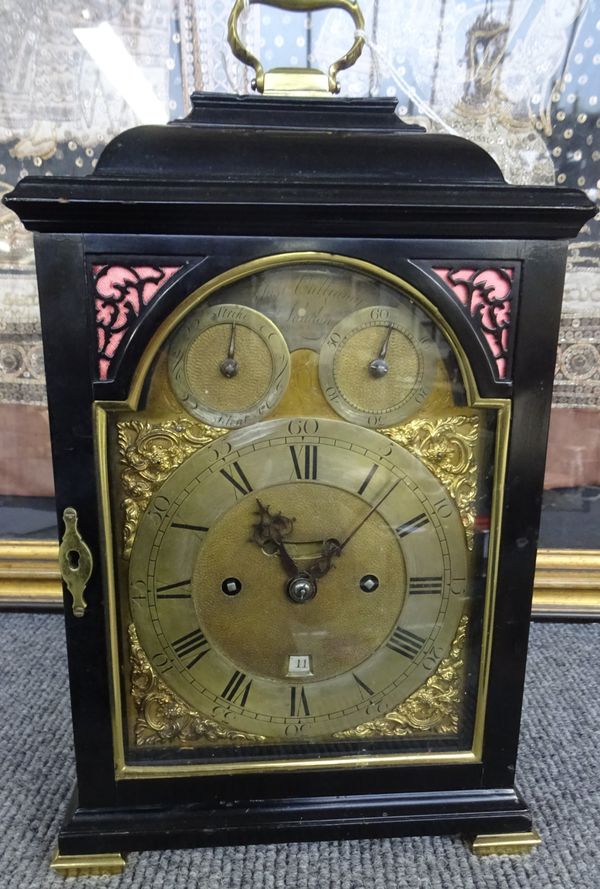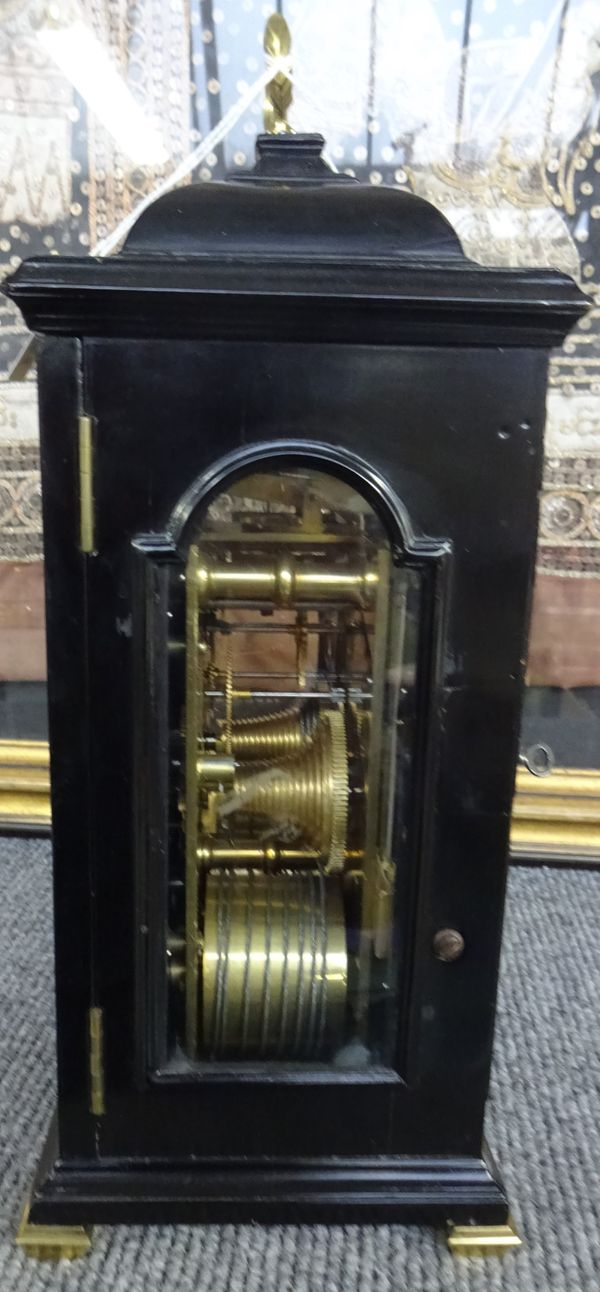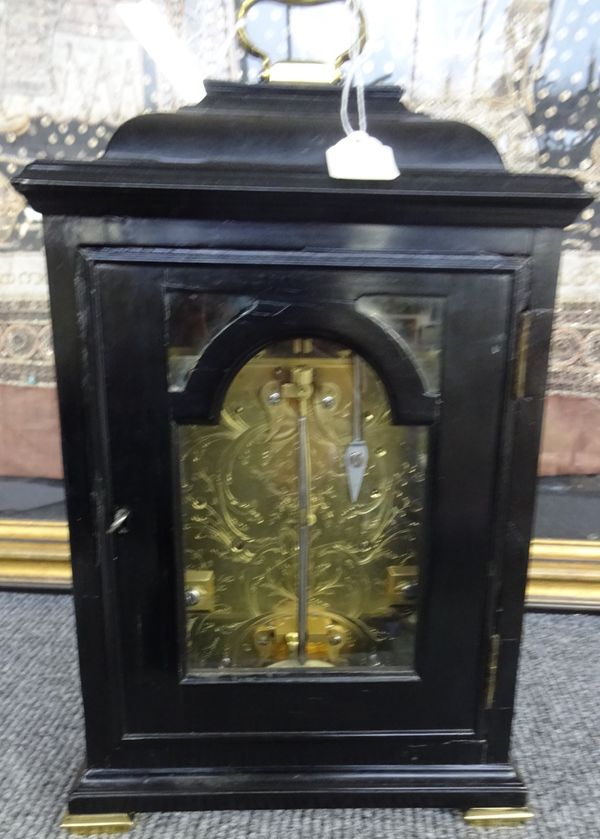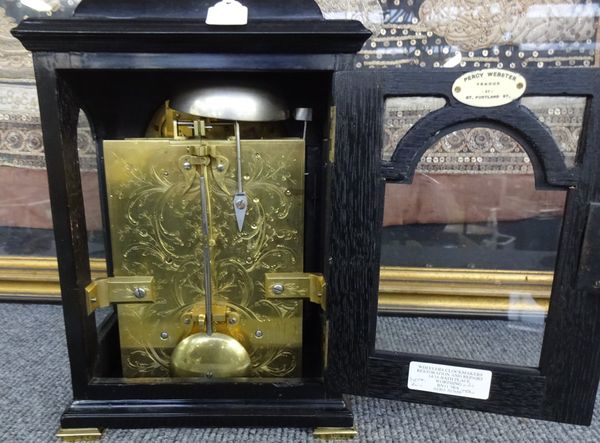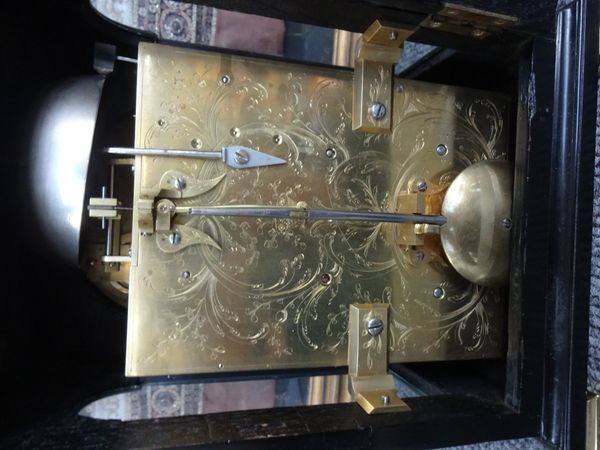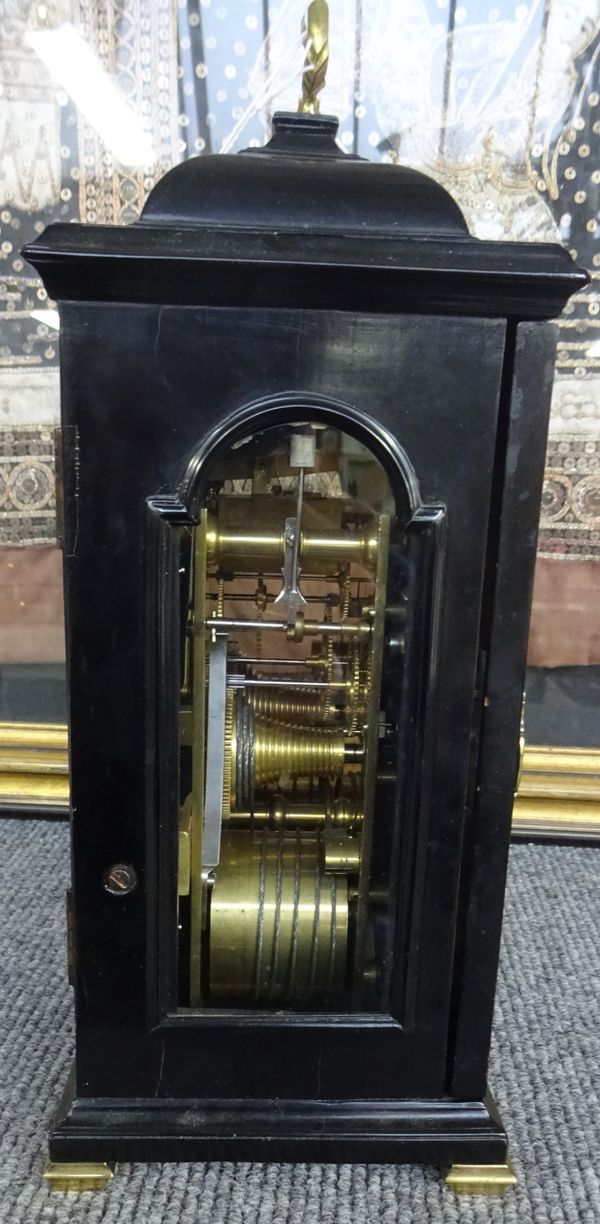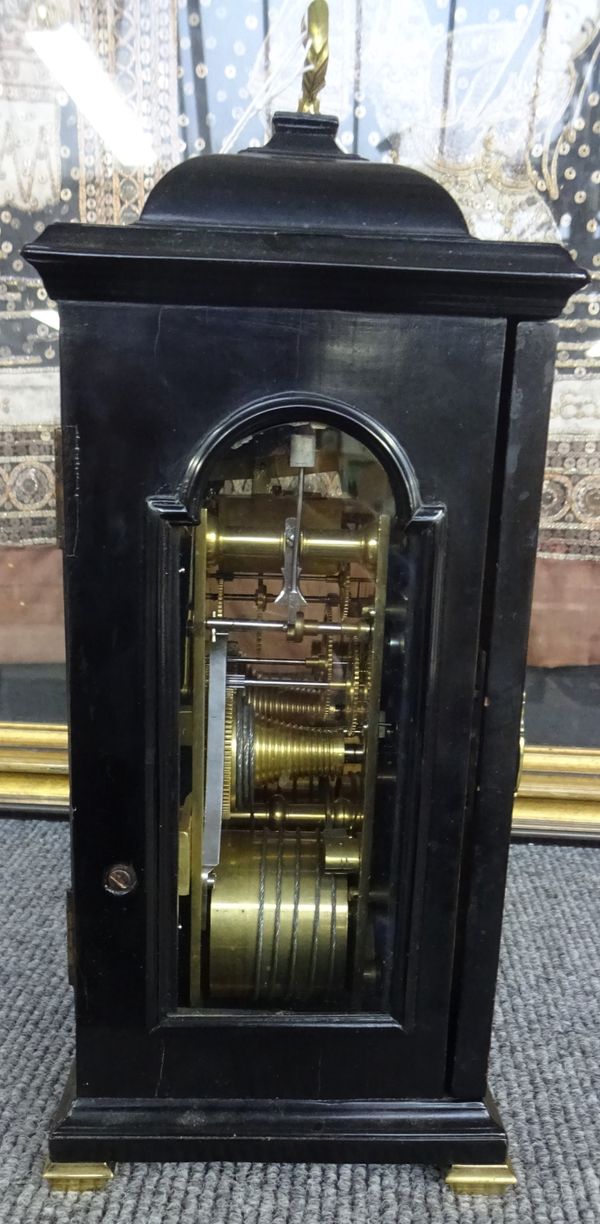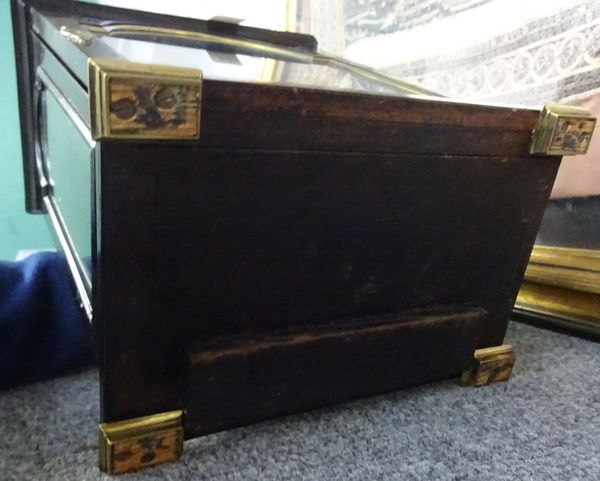A GEORGE III BRASS-MOUNTED EBONISED STRIKING TABLE CLOCK
By Justin Vulliamy, London, circa 1770
| Estimate: | £3,000 - £5,000 |
| Hammer price: | £10,000 |
The bell-top case with a brass carrying handle, above a glazed panel door and glazed sides, on stepped base and brass bracket feet, the 6in arched brass dial signed on an escutcheon in the arch between two subsidiaries for Strike /Silent and calibrated pendulum regulation, with signed silvered chapter ring enclosing a matted centre with false pendulum aperture and calendar aperture, the twin train wire gut fusée movement, foliate engraved backplate and pendulum locking block
36cm high (handle up)
Francois-Justin Vulliamy (1712-1797), the son of a pastor at Gingins, in the Pays de Vaud region in Switzerland, emigrated to England in 1730. Invited into partnership with his future father-in-law Benjamin Gray (d. 1764) around 1743, who the year prior had been appointed Watchmaker in Ordinary to George II, it was then extended to the Partnership. The Pall Mall based business flourished, with output of the highest quality. Following Gray's death the Royal Warrant passed to Vulliamy and continued to be held by the firm throughout the 19th century.
This clock appears not to be numbered. Justin Vulliamy began numbering around 1780, although the surviving record books begins with clock No. 296 in 1797. So this piece would have been made after Gray's death, when Justin Vulliamy signed in his own name and before he began his numbering in the 1780s.
The clock is in original condition. The dial is stained. The case with marks and knocks consistent with age. The back door hinges replaced. Chips and repairs to fillet edge around dial. The movement runs and ticks. Original movement and case. Some restoration to the case. Clock is 36cm high
